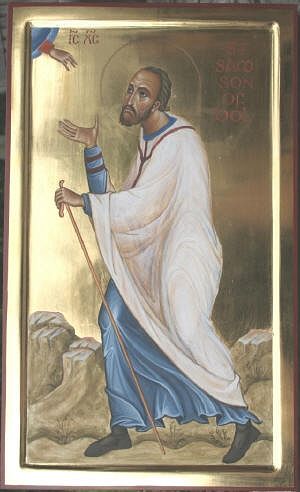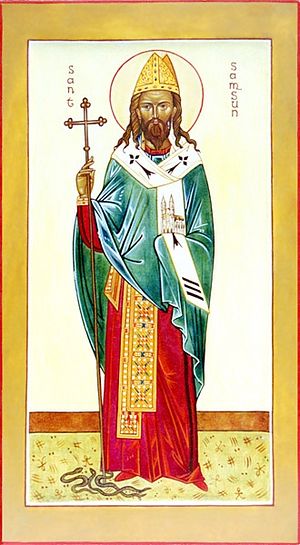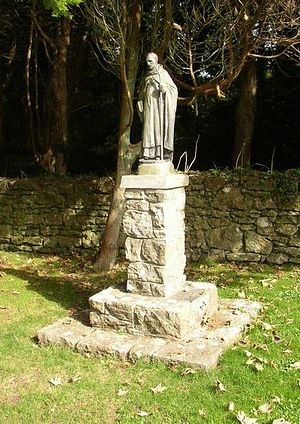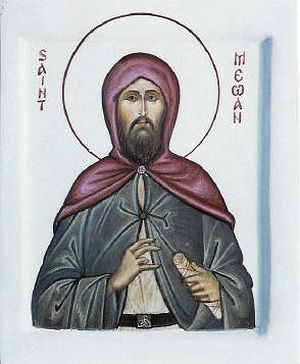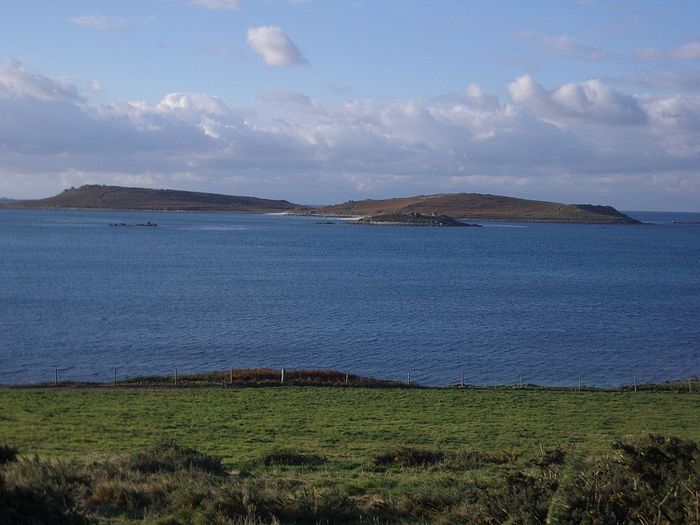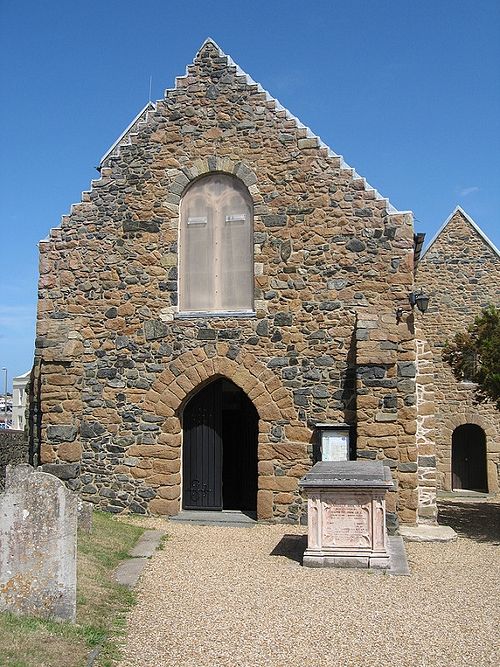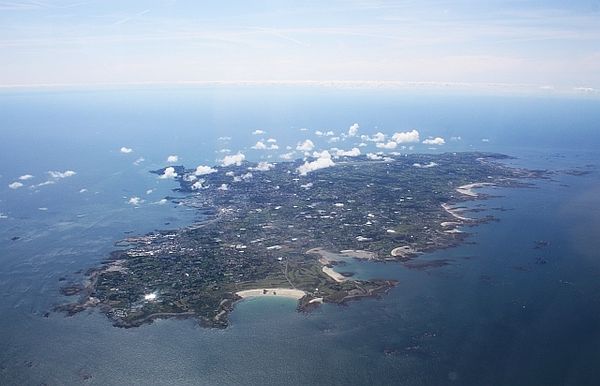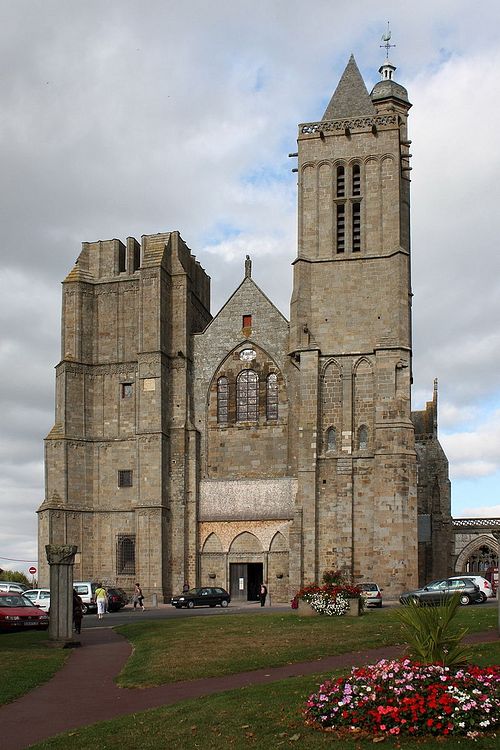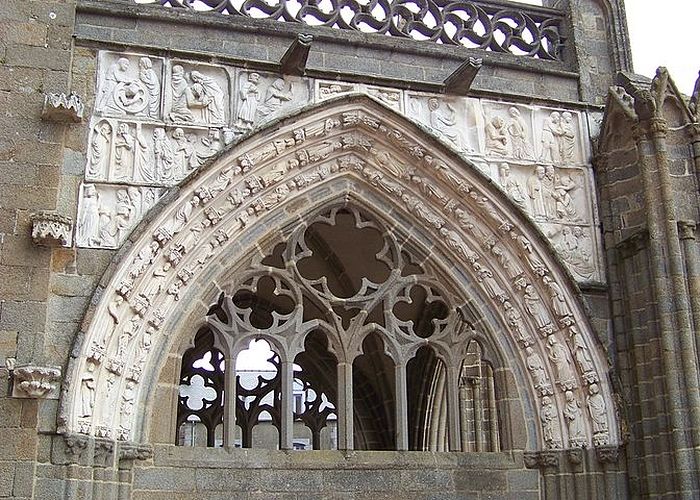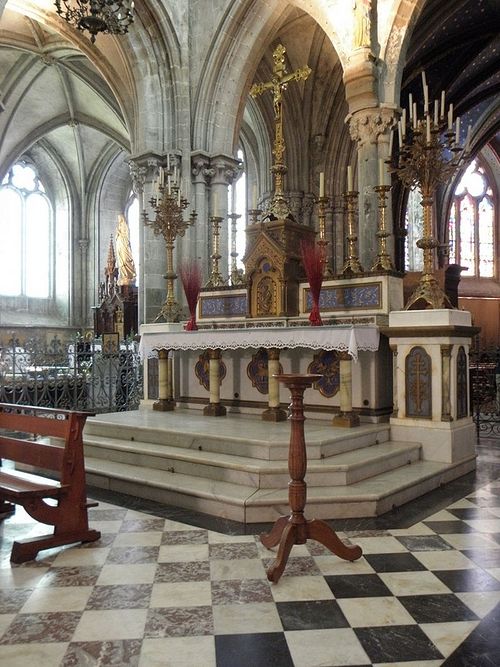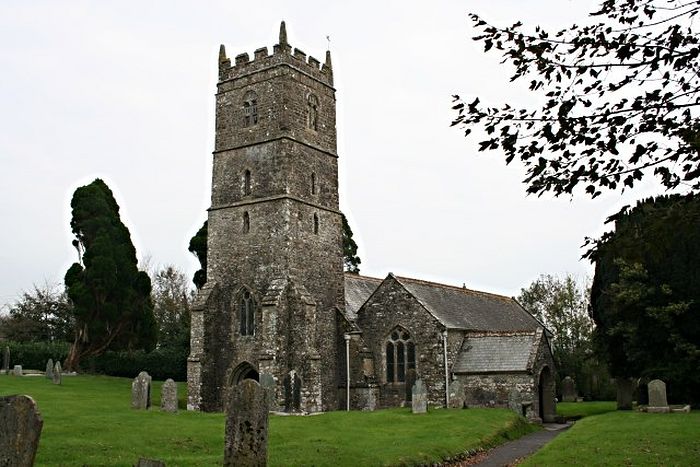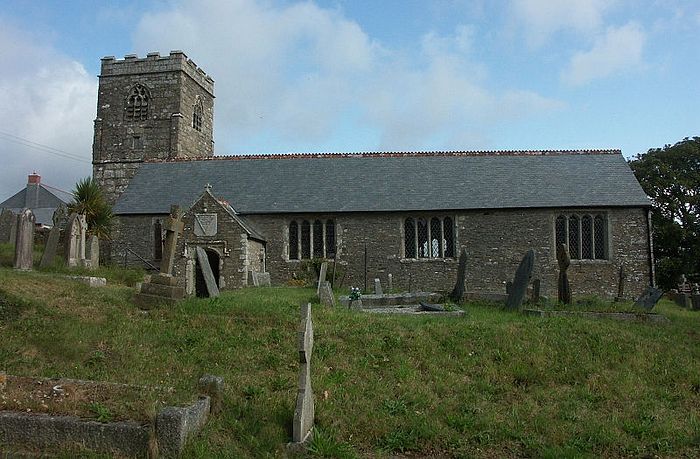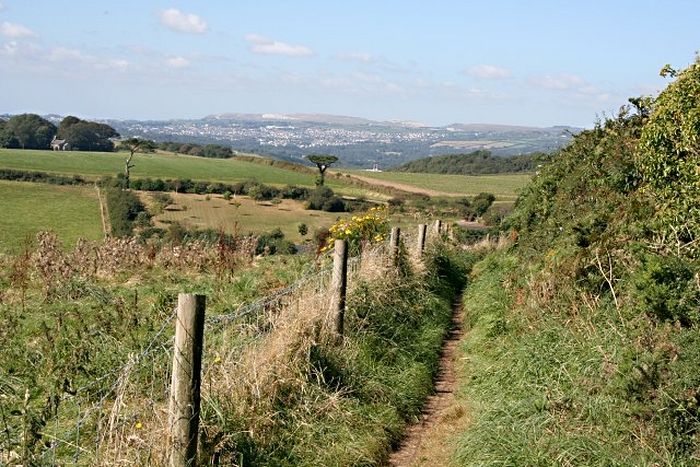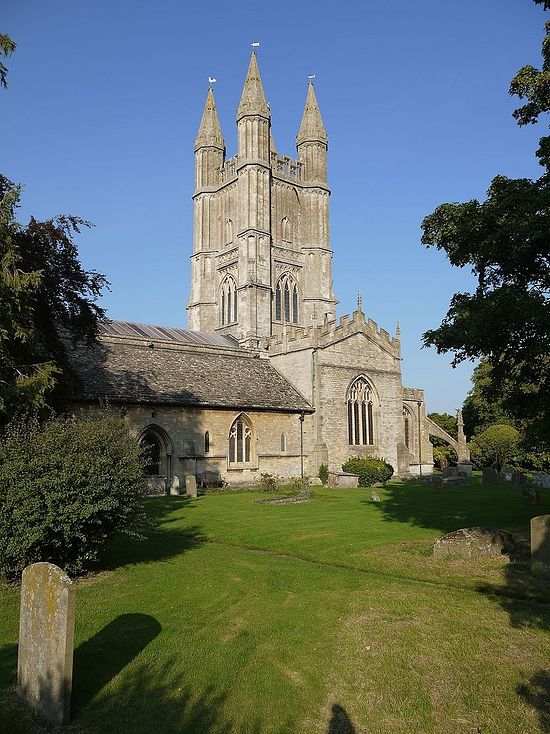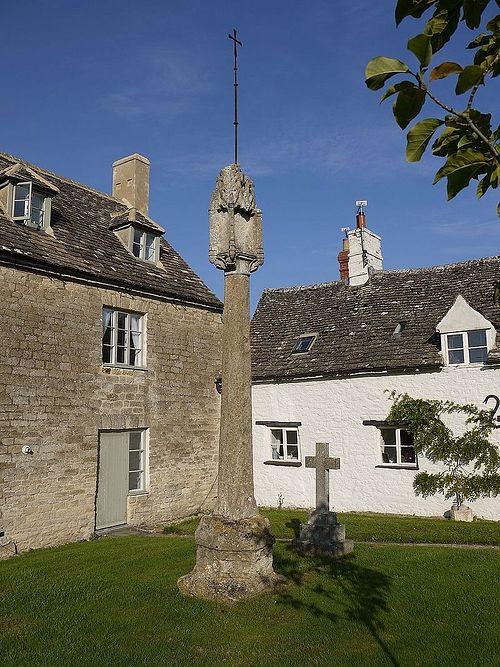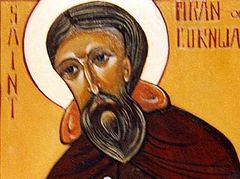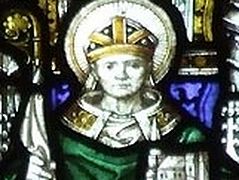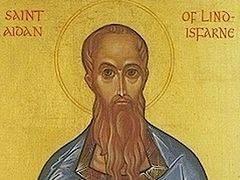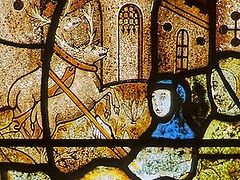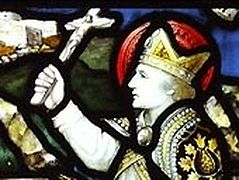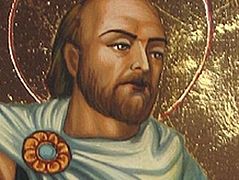Brittany (the Breton name: Breiz; the French name: Bretagne) is a region and a former duchy in North-Western France which forms a peninsula between the Bay of Biscay and the English Channel. It was settled by the Celtic tribe of Britons from Wales and Cornwall, fleeing the invading Angles and Saxons from the east and the Irish from the west in the fifth to seventh centuries (the epoch known as “the Age of the Celtic saints”). It was disputed between England and France until 1364 and was finally incorporated into France in 1532. Spiritually, Brittany is very similar to Wales and Cornwall and this atmosphere of the holiness and heritage of early Celtic saints has been preserved there.
Throughout its Orthodox history, Brittany produced dozens of saints: men and women, ascetics, abbots, missionaries, bishops, martyrs, kings and queens, who lived both on mainland Brittany and on small offshore islands. Many of its saints came to this region from elsewhere (mainly from the British Isles and Ireland), but this region also produced a host of its own saints once it had been evangelized. Throughout its history, numerous churches and monasteries were founded in Brittany, some of which still survive. Lives of most of the Breton saints were either lost or rewritten by Catholics in the late medieval period, so, now we only have basic information on them, in addition to ancient traditions, folklore and modern archeological evidence. There are numerous churches dedicated to Breton saints across the Celtic world, there are hundreds of statues to these holy men and women in this Catholic region of Brittany, countless towns and villages and other geographical sites bear their names, and sometimes their holy relics, wells and original cell-chapels still exist.
The earliest Celtic name of Brittany is Armorica, but the British colonizers gave it the name Brittany, that is, “Lesser Britain”, while they called the island from where they had sailed “Great (in the sense “greater”) Britain”. Britons had an enormous influence on the culture and development of Brittany, especially its western part, giving it even its own – Breton – language. Those British settlers who came from the now English district of Devon (the early Celtic kingdom of Dumnonia) founded the Celtic kingdom (later region) of Domnonia on the north coast of Brittany (the modern French name: Domnonee). Likewise, an area of southwestern Brittany near Quimper was called Cornouaille, after the Celtic region of Cornwall. St. Samson, a native of Wales, is considered to be one of the chief enlighteners of Brittany. Let us recall his Life.
St. Samson (also spelled Sampson), one of the most successful Celtic missionaries, was born in about 486/490 and reposed in about 565. This saint played a key role in establishing the Church of the British settlers in Brittany. Unlike nearly all the Lives of Celtic saints, the early Life of St. Samson, written soon after his repose, in about 610 or 625, has survived. This long and detailed biography contains many interesting facts on the Celtic Church of that time.
St. Samson, who, like St. David, the patron saint of Wales along with several other Welsh saints, bore a name from the Old Testament, was born in the southeast of Wales to a noble and wealthy family. His father, Amon, hailed from Dyfed, and his mother, Anna, hailed from Gwent. They had been childless for many years and believed that Samson was sent to them as a special blessing from the Lord. The parents sent their young son at the age of five to live and study at the most famous Monastery and school of Llanilltud Fawr, founded by St. Illtyd. According to the saint’s Life, as soon as Illtyd first saw Samson he predicted a great future for him. Under the celebrated holy father’s spiritual guidance the future ascetic was trained in the fundamentals of monastic life. He studied with all diligence, and became stronger and stronger in the love of Christ and a pure monastic life. He grew in prudence, charity, benevolence to all, and intelligence, and developed many skills.
It was there that Samson was ordained deacon and later priest by St. Dubricius – another illustrious Welsh saint – and on both occasions a white dove descended on the saint’s right shoulder during the sacrament. At Llanilltud Fawr the young Samson practiced a strict ascetic life; it was said that he always abstained from any alcoholic drinks. Once when the brethren were working in the field a snake bit one of them. Samson made the sign of the cross over the bite, gave the brother holy water with oil, and the latter was made well. With time Samson had to leave this holy monastery, as two nephews of Illtyd who lived there in the community envied him and, at the instigation of the devil, even tried to slander and murder the saint. However, their attempts proved unsuccessful, and the poison that they gave him to drink had no effect on him.
Thus, Samson moved to the great Welsh monastery situated on Caldey Island in Dyfed (now in the county of Pembrokeshire). This monastery had been established by a disciple of Illtyd named Pyro and was destined to grow into a famous monastic center that produced saints. At Caldey, which had stricter discipline, Samson practiced manual labor by day and absorbed the Holy Scriptures by night. On the isle he first served as the cellarer and then became its abbot for three and a half years. The holy abbot raised the spiritual level of the community, with wisdom instructed the monks, setting them a good example of humility and self-discipline. Once the saint heard that his father Amon had fallen seriously ill. The saint visited his father and persuaded him to take up monasticism when the latter was on his deathbed. Amon agreed, and was at once healed. Many other relatives of Samson hastened to follow his father’s example; they all wholeheartedly devoted the rest of their lives to the service of the Almighty and people and founded a great many churches and monasteries. The saint’s uncle was sent as a priest to Ireland.
Some time passed. Samson, then the renowned abbot of Caldey, accepted an invitation from learned Irish pilgrims and went to Ireland with them for a relatively short time. There he established or restored a monastery, and, according to his biographers, “cured lepers, restored sight to the blind, cast out demons and guided many to the path of salvation.” On returning to Britain, the holy man gave up the abbacy and retired to a very secluded place on the banks of the River Severn (it was either in Wales or what is now western England). Soon his father and two other monks joined Samson. In spite of his attempts to hide from the world, the glory of the great wonderworker and spiritual mentor Samson spread all over Wales and even beyond, so the humble ascetic decided to leave his companions and isolated himself in a very remote cave with a spring beside it where he spent all his time in prayer. His biographer says that the saint directly conversed with angels in the cave and that a chapel was later built at its entrance in commemoration of his great ascetic labors. But the Lord ordained for him many years of preaching and teaching people in the future.
Thus, several years later, the holy man was appointed abbot of another monastery, and later, about the year 521, Samson was consecrated bishop at Lanniltud Fawr in Wales. The consecration was most probably performed by Dubricius. This is how it came to pass. Llanilltud Monastery had a tradition: to consecrate a new bishop every year on the feast of the Apostle Peter. Shortly before the feast an angel appeared to Dubricius in a vision and told him to make Samson a bishop; on the same day an angel (according to another version, St. Peter himself) appeared to Samson and told him the will of God: that he would become a bishop very soon. And that is how it was. Soon after his consecration, St. Dubricius and other monks saw a stream of fire glittering in Samson’s mouth and an angel assisting him as he was serving the Liturgy.
Already in the rank of a bishop, Samson resolved to go to Brittany to enlighten this Celtic land. According to tradition, he made this decision following a miraculous apparition of an angel to him when he had been praying alone in church.
His journey to Brittany ran through Cornwall where he lingered. The man of God travelled all over this region from north to south – from Padstow to Falmouth, zealously preaching the Gospel. It was said that Samson kept such a strict fast in this land that at one time his health was in danger. In Cornwall the holy missionary built a monastery at Golant (the name meaning “holy enclosure”) and possibly at South Hill, and on the site of a pagan Celtic “standing stone” on the top of a hill he erected a Christian cross. In Cornwall Samson performed many miracles, for example, he healed a boy who had fallen from a horse and broken his neck. The saint admonished the local people who stubbornly practiced paganism and encouraged them to embrace the faith of Christ and worship the true God.
Among the faithful companions and disciples of Samson in Cornwall were Saints Austell (sixth century; feast: June 28; he founded a monastery in what is now the town of St. Austell in south Cornwall) and Mewan (+ c. 617; feast: June 21; he founded the Monastery of Saint-Méon in Brittany). Samson is also linked to the places of Padstow (near which he had a cell) and St. Kew in Cornwall. Our saint certainly met Petroc, a co-patron of Cornwall, during his stay in this land. It is quite possible that during his prolonged stay in Cornwall Samson organized a missionary trip to the Isles of Scilly – a group of about 140 small isles off the extreme south-west of Britain of which only five are inhabited. One of these isles (the largest uninhabited) is called Samson to this day, obviously to the living memory of his missionary labors.
At last, the saint embarked for Brittany. As he lived in the spirit of all Celtic ascetics, Samson made another stop on the way to Armorica – this time on the Channel Islands off the north-west coast of France (now they are Crown Dependencies) in the Channel. Guernsey, one of the Channel Islands, has St. Samson as its patron saint. The tradition holds that the saint landed here and converted its inhabitants to Christ. A whole parish of Guernsey, a local harbor and a church on this island are named after St. Samson to this day. The church of St. Samson is the oldest in Guernsey and dates back to the early twelfth century. Its external walls have very early examples of a sundial; among its treasures are a pre-Reformation chalice, censer and other relics.
Settling in Brittany, the saint of God founded his most famous and important monastery in Dol (then still an isle) in what is now the Ille-et-Vilaine departement and built a number of other monasteries and churches.
As Abbot of Dol, Samson made it the center of his ministry in Brittany. According to one version, Samson was not only Abbot, but also Bishop of Dol, which certainly was a spiritual capital of all Brittany. In fact, the inhabitants of Brittany were going through hard times at that moment. Their legitimate prince had been murdered by a cruel usurper and his son was in captivity. Thus, from Brittany Samson went to the Frankish King Childebert I (ruled 511-558) and persuaded him to free the Breton Prince Judual who had been sent to the Franks as a captive. Samson performed many miracles (for example, healed a demoniac count at the palace by anointing his face and chest with oil), so that King Childebert gladly bestowed estates and privileges on him. The saint also excommunicated the usurper of Brittany for his crimes. These facts indicate that our saint associated with rulers and took part in political affairs when needed. In 557 Samson took part in the Third Church Council in Paris (and signed his name among its bishops: “Samson, a sinner” – which indicates his meek nature). So humble was the saint that he refused to be accommodated in luxurious lodgings that Childebert offered him during the Council, instead preferring to stay at a local monastery.
Samson founded Pental Monastery in Normandy, which subsequently bore his name. Judging by the number of churches dedicated to Samson we can assert that this saint had a great influence all over Brittany and also far beyond. In his labors Samson was helped by his companion and relative St. Mewan, mentioned above. There were indeed many saints among Samson’s close disciples and followers. One of them is St. Maglorius (+ c. 575: feast: October 15) who was most probably his cousin. Maglorious moved to Brittany together with Samson, ruled Lammeur Monastery, became Samson’s successor as Bishop of Dol and ended his days on Sark in the Channel Islands where he had founded a monastery. Among miracles performed by Samson in Brittany let us mention the healing of a woman of leprosy and her daughter of madness. Before his death Samson visited all the churches and monasteries that he had founded for the last time. A noted missionary, abbot, ascetic, teacher, a distinguished Church and political figure, St. Samson reposed in the Lord peacefully at a very advanced age.
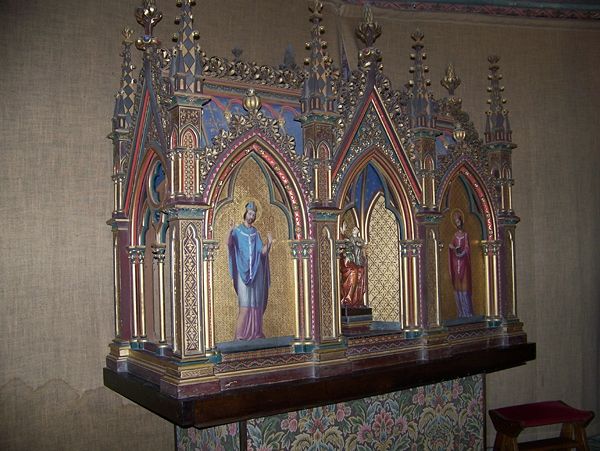 The reliquaries of Sts. Samson and Maglorius at Dol Cathedral, Brittany (source - Dol-pleinefougeres.catholique.fr)
The reliquaries of Sts. Samson and Maglorius at Dol Cathedral, Brittany (source - Dol-pleinefougeres.catholique.fr) After Samson’s death his relics were enshrined in Dol Cathedral. In the first half of the tenth century a portion of his relics was obtained by the pious King Athelstan of England (ruled 925-939) and placed in the newly-established Milton Abbas Monastery in Dorset. The name of St. Samson is present in many early English calendars. Six ancient churches were dedicated to this saint in England. Samson is still venerated in Wales, Brittany (and other parts of France), Cornwall and England. In art he is often depicted with a cross and a staff and also with a book and a dove. Samson is a typical example of a Celtic wandering missionary monk – an ascetic and an enlightener at the same time. He is rightly regarded as one of the most venerated Celtic missionaries of his age who came from Britain.
Today, the main center of Samson’s veneration is the Breton town of Dol-de-Bretagne where his relics are preserved at the Cathedral dedicated to him. It is here that he founded his main monastery. This Cathedral survived many centuries of the turbulent history of the site, including terrible floods, Viking raids, the taking of the town by King Henry II of England in 1164, the destruction by King John Lackland, the French Revolution, after which the church was temporarily used as stables and a storehouse, and the suppression of the diocese in 1801. Meanwhile, this place down the centuries remained holy and attracted a permanent influx of pilgrims to St. Samson’s relics.
The present Cathedral is in a mixture of various styles and is about 800 years old. It is richly and beautifully decorated both outside and inside and houses many treasures. The edifice’s grand porch is nicknamed “St. Maglorius Porch”: it consists of three arcades with 38 bas-reliefs and 132 white stone statuettes. The central arcade shows scenes from the life of Christ, the east arcade – scenes from the life of the Mother of God, and the west arcade – scenes from Breton history, including the repose of Samson. The smaller porch is decorated with Biblical relief carvings, including the tree of Jesse. Inside the Cathedral, the nave has seven bays. The choir has over seventy oak stalls with carvings on arm-rests which are the oldest in Brittany. The Cathedral has a wealth of side-chapels, and is abundant in statuary, paintings and stained glass. Among the Cathedral’s chapels the large fourteenth-century apsidal chapel is dedicated to St. Samson. It is here that the relics of Sts. Samson and Maglorius are kept in two Dutch gilded reliquaries which date to the eighteenth century.
The Cathedral has two high altars, one of which is very old and was created before 1410: it was near it that Samson’s relics originally rested under a baldachin. The new altar is from the 1980s and its faces depict the Last Supper, Christ being taken from the Cross, St. Samson and St. Maglorius. The pulpit panels have statuettes depicting the great saints of Dol. What was formerly the chapter house is now the fourteenth-century Chapel of St. Maglorius. The church has a famous bas-relief depicting Christ speaking to the lawyers in the Temple. The oldest stained glass windows in the Cathedral are of the thirteenth century. The earliest window which lights the choir has lancets with about fifty frames depicting details of Lives of various saints. One of the panels depicts many scenes from St. Maglorius Life; his successor as Bishop of Dol, St. Budoc, is commemorated as well. Outside the Cathedral, in the presbytery garden, is a sarcophagus that is believed to have kept the relics of Samson right after his death. There used to be a sixth-century holy well of St. Samson in the grounds of this cathedral which was excavated in recent times to the amazement of many.
In the vicinity of the village of Landunvez in the Finistere department of Brittany one can find an ancient chapel, holy well and cross of St. Samson. The saint may have stayed here during his life. Miracles of healing from rheumatism, eye diseases and other ailments have taken place on this site.
The church in the village of South Hill in south-eastern Cornwall, where he probably founded a monastery, is dedicated to St. Samson. It dates back to 1333 and is preserved in good condition to this day. Its tower is crowned by figures of the twelve apostles. The churchyard boasts an inscribed Celtic stone of the sixth or seventh century. There is a well in honor of St. Samson beside it.
The parish church in the village of Golant in South Cornwall on the River Fowey, where Samson built a monastery and briefly ruled as abbot, is dedicated to him. The present structure was built in 1509. The saint is depicted on a number of its stained glass windows and one of them contains scenes from his Life. The medieval church pulpit has a carving of our saint. There is an ancient holy well of Samson to the left of the church porch. According to tradition, the saint himself founded this well, striking his staff on the ground. Its water is still used for church baptisms. An indistinct statue behind the well-house presumably depicts the saint. In the countryside not far from this church there is an ancient cave which is difficult of access. It is often called “St. Samson’s” cave. According to tradition, a local ruler asked Samson to expel a serpent which reputedly lived in the cave and terrorized the local population. Samson successfully vanquished the serpent and lived in this cave as a hermit for some while. Notably, the forty-five-kilometer (c. twenty-eight-mile)-long “Saints’ Way” – a popular ancient Cornwal pathway, passes near this village of Golant. According to tradition, many Celtic saints and pilgrims who travelled from Ireland or Cornwall to Brittany by sea, made a stop near Golant on this path. Remarkably, the parish in which Golant village is included is called St. Samson after our saint.
The Cornish land is famous for the numerous saints it produced, yet one of the best-known and most beloved of them remains St. Samson, although the main labors of his life were performed outside the land. In Wales, Samson is commemorated as the heavenly patron of Caldey Island. Though its active Cistercian Abbey and two other churches are dedicated not to our saint, a statue of Samson stands on this island separately – it formerly stood above the entrance door of the monastery church and was installed in its present position in the mid-1950s. There is a 100-year-old church of Sts. Dyfrig (Dubricius) and Samson situated within the neighborhood of Grangetown in the south of Cardiff, the capital of Wales. In England, a superb twelfth-century parish church in the pretty Wiltshire town of Cricklade is dedicated to St. Samson. It is considered one of the most beautiful churches in this county. It has some minor fabric from the Saxon period. Its churchyard has two ancient crosses: a medieval Christian cross and a fourteenth-century town cross.
Samson of Dol is at the head of the saints known as “the Seven Enlighteners of Brittany”, the other six are: Sts. Paul Aurelian (+ c. 575; feast: March 12; became bishop of Saint-Pol-de-Leon); Tudwal (+ c. 564; feast: November 30; became Bishop of Tréguier where his relics are still enshrined); Briocus (+ c. 510; feast: May 1; he founded St. Brieuc Monastery); Malo (+ c. 640; feast: November 15; first bishop of St. Malo); Paternus (+ c. 500; feast: April 15; Bishop of Vannes); and Corentinus (+ c. 490; feast: December 12; the first Bishop of Quimper). Most of these saints are venerated not only in Brittany, but also in parts of Wales and Cornwall.
Finally, Sts. Samson and Columba are among the saints sung of by the contemporary Irish composer Shaun Davey (b. 1948) in his live Celtic suite album, The Pilgrim, issued in 1983, and dedicated to the wanderings of Celtic saints.
Holy Father Samson of Dol, pray to God for us!

